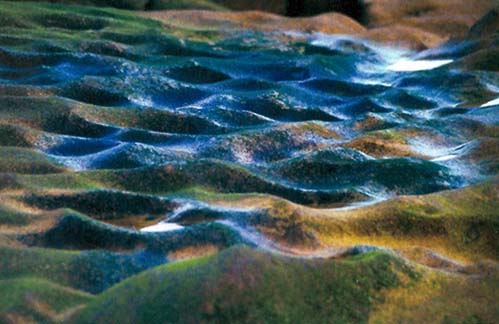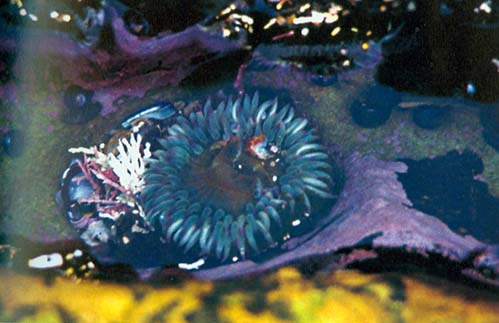Art in Nature: The Photographs of John Daido Loori
The American Museum of Natural History
New York City, through January 9, 2005

Point Lobos on the northern coast of California, is a place of beauty that has drawn and tested generations of American photographers. Like larger creatures who keep smaller creatures away, photographers now globally respected—Edward Weston, Ansel Adams, Minor White, Paul Caponigro—have prowled the rough terrain, watery hollows, and stands of wind-blown cypresses of Point Lobos and created a composite portrait of the place that now strikes many as classic: classic in its sobriety (black-and-white photography was the norm); classic in its studied sense of form, texture, and the rightness of the moment and light; classic in its compression (just this place, just these kinds of things in this place); classic in its deliberate tension between abstraction and figuration. Point Lobos was, for these photographers, both a sacred place and a workshop. The casual weekend photographer can go carefree to Point Lobos—it is, after all, a public space available to all—but photographic artists who know their tradition go with memories of great images already made. They go with the burden of their art, which is both a privilege and an uneasy challenge.
John Daido Loori, abbot of Zen Mountain Monastery, author, and photographer, chose to photograph Point Lobos in color. The earlier photographers generally did not do so; Point Lobos in their art is wabi, austere even under the sometimes dazzling coastal light. Daido Loori’s decision for color must have cleared a path. In his images, Point Lobos becomes new again. The color palette in the suite of twenty-eight photographs is saturated and lush, as if each and every thing—rock, lichen, kelp, starfish, anemone, water itself-were bearing its color like a flag. The image entitled Beach Flower, reproduced on this page, will carry that point more effectively than any words. It is one of the most striking among the photographs displayed in a quiet space on the main floor of the museum.
None of us is quite free of where we come from, nor is there any need to be free of much that remains fertile and giving over the years. The visitor at this exhibition will find echoes of Zen calligraphy in certain photographs, as if fragments of kelp and other sea stuff had momentarily become writing. So, too, there are echoes of the dry temple gardens of Kyoto, touched and animated in these photographs with flows of color, as if they were blooming. Similarly, the vocabulary of modernism—our shared appreciation for pure design and abstract form—is warmly evident. But all of these echoes in the art of these photographs are a murmur compared to a shout, and the shout is color.
Every good exhibition asks of us a “crux move,” as rock climbers say of the most difficult but rewarding passage in a climb. The crux move where new art is concerned is often a groping but clarifying insight into what lies at the heart of the works on exhibit—their raison d’être, which can be shared more fully when it is understood.
Joseph Campbell liked to tell a story about D. T. Suzuki, with whom he attended a conference on religion many years ago. A young Hindu scholar passionately questioned Suzuki at a time when the elderly scholar had wearied of the day’s proceedings. “Dr. Suzuki,” asked the young scholar with insistence, “in what sense of the word would you say that the world is real?” Suzuki barely stirred. He raised his eyes. “I would say,” he slowly replied, “that the world is real in every sense of the word.”
Something of this kind ripples through the exhibition. Yes, impermanence. Yes, samsara. But this world we share with one another and so many other forms of life shines with a vividness that cannot be disregarded. In the foundation myth of Zen, Shakyamuni Buddha silently held up a flower. No less silently, his disciple Mahakashyapa smiled with recognition. He took the flower in.
